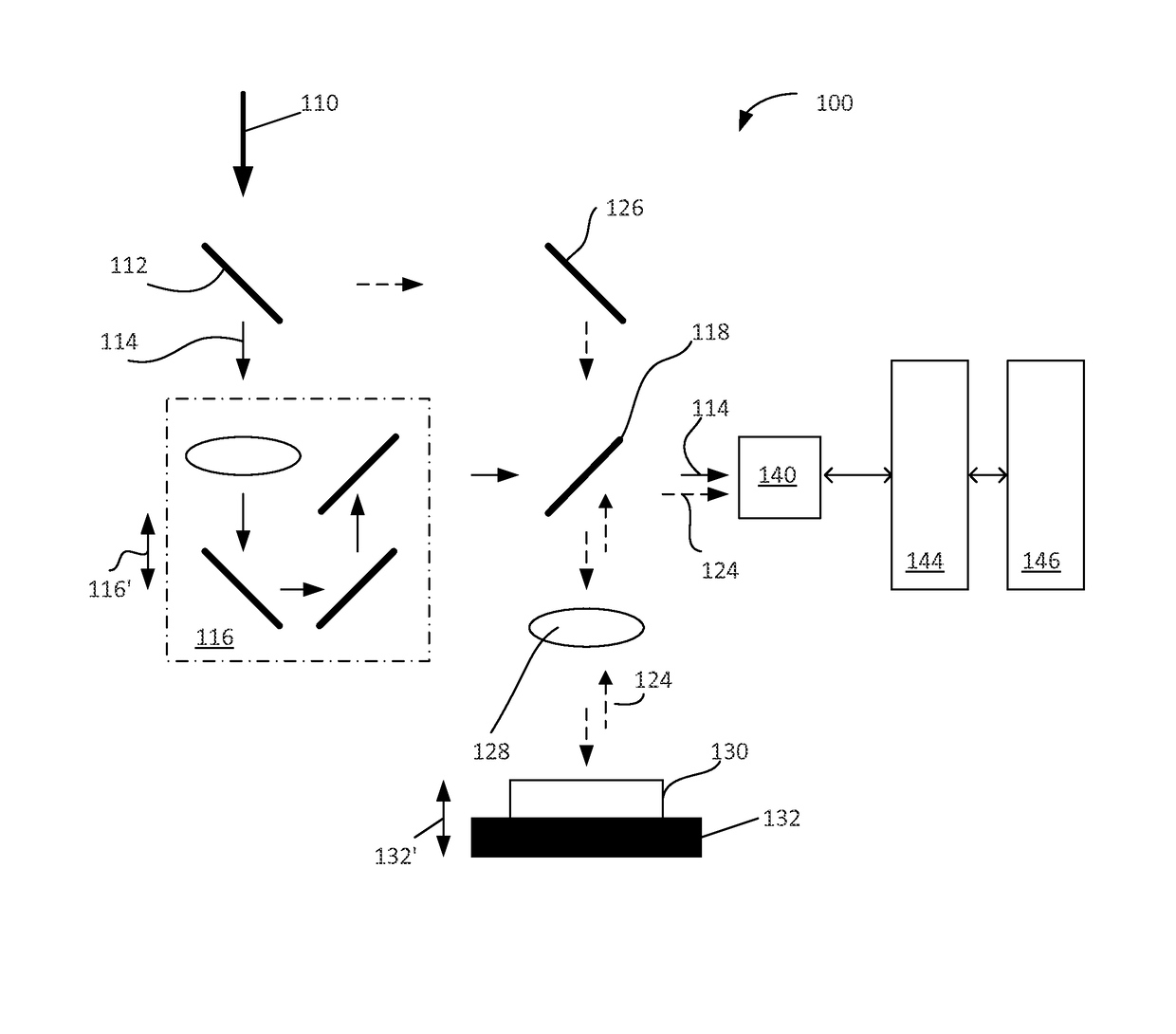Laser speckle microrheometer for measuring mechanical properties of biological tissue
a microrheometer and mechanical technology, applied in the field of biological tissue mechanical properties measurement, can solve the problems of sometimes detrimental cell health, and no means of 3d measurement of ecm stiffness exist today
- Summary
- Abstract
- Description
- Claims
- Application Information
AI Technical Summary
Benefits of technology
Problems solved by technology
Method used
Image
Examples
Embodiment Construction
[0028]In accordance with preferred embodiments of the present invention, a Laser Speckle Microrheometer (LSM) system is disclosed, as well as a corresponding method of depth-resolved speckle microrheometry, that facilitate the measurements of 3D mechanical properties of a biological tissue with cellular-scale (on the order of several microns, for example 1 to 20 microns, preferably 1 to 10 microns, and more preferably 1 to 5 microns) resolution with high sensitivity in order to monitor small changes in the ECM stiffness.
[0029]References throughout this specification to “one embodiment”, “an embodiment”, “a related embodiment”, or similar language mean that a particular feature, structure, or characteristic described in connection with the referred to “embodiment” is included in at least one embodiment of the present invention. Thus, appearances of the phrases “in one embodiment”, “in an embodiment”, and similar language throughout this specification may, but do not necessarily, all ...
PUM
| Property | Measurement | Unit |
|---|---|---|
| optical distance | aaaaa | aaaaa |
| optical distance | aaaaa | aaaaa |
| optical distance | aaaaa | aaaaa |
Abstract
Description
Claims
Application Information
 Login to View More
Login to View More - R&D
- Intellectual Property
- Life Sciences
- Materials
- Tech Scout
- Unparalleled Data Quality
- Higher Quality Content
- 60% Fewer Hallucinations
Browse by: Latest US Patents, China's latest patents, Technical Efficacy Thesaurus, Application Domain, Technology Topic, Popular Technical Reports.
© 2025 PatSnap. All rights reserved.Legal|Privacy policy|Modern Slavery Act Transparency Statement|Sitemap|About US| Contact US: help@patsnap.com



